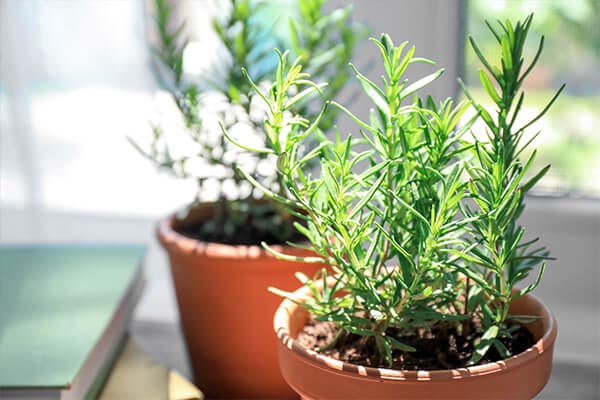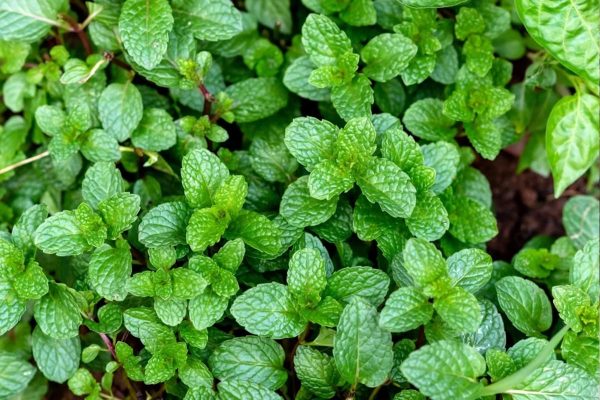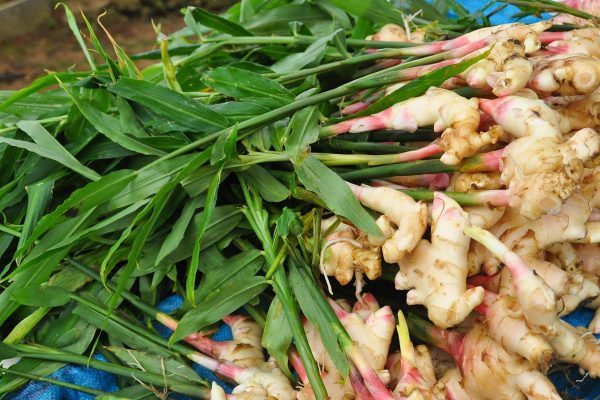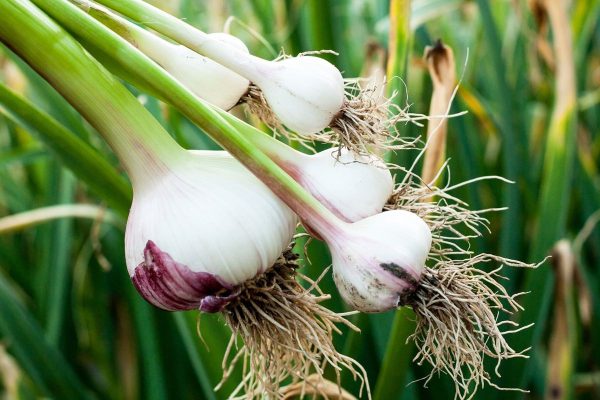Plants
Rosemary
Introduction / परिचय
Rosemary (Rosmarinus officinalis) is a fragrant and evergreen herb that belongs to the mint family, Lamiaceae. Native to the Mediterranean region, this versatile herb is celebrated for its aromatic leaves and culinary uses. With needle-like leaves and a woody stem, rosemary is a hardy and drought-resistant plant, thriving in well-drained soil and sunny conditions. Renowned for its robust flavour, rosemary is a staple in Mediterranean cuisine, enhancing dishes with its earthy and pine-like notes. Beyond the kitchen, rosemary is valued for its medicinal properties and aromatic oils. Popular in gardens and kitchen windowsills, this herb adds flavour and fragrance to diverse culinary and therapeutic endeavours.
| English Name: | Rosemary |
| Hindi Name: | गुलमेहेंदी (Gulmehendi) |
| Scientific Name: | Salvia rosmarinus |
| Family: | Mints |
| Kingdom: | Plantae |
| Light : | Full Sun |
| Height: | 1 to 3 feet tall |
| Flower Color : | pale blue, pink, or white |
| Leaves Color : | Green |
| Eason Features : |
Also Read This : Green Guardians: Exploring the Best Plants Used for Hedges
When to Plant Rosemary

Rosemary is best planted in spring or fall, avoiding extreme temperatures. In regions with mild winters, fall planting allows the herb to establish roots before colder weather. Choose well-drained soil with a pH between 6.0 and 7.0, and ensure the site receives at least six hours of sunlight daily. When planting, space rosemary plants about 2 to 3 feet apart, as they can grow into sizable shrubs. Consider using sandy or gravelly soil to enhance drainage. Regular watering is essential during the initial growth period, but rosemary is remarkably drought-tolerant once established. With proper care, this aromatic herb thrives in various climates.
Flowering time of Rosemary
Rosemary typically begins to bloom in late spring to early summer, showcasing small, two-lipped, bluish-purple flowers that charm the herb's evergreen foliage. The flowering time can vary based on climate and local growing conditions. In warmer regions, rosemary may flower earlier, while cooler climates might experience blooms slightly later. The flowering period extends through summer, attracting pollinators such as bees with its fragrant blossoms. Regular pruning after flowering helps maintain the plant's shape and encourages a fuller, bushier growth. Despite being primarily known for its aromatic leaves, rosemary's delicate flowers contribute to its overall ornamental appeal.
Also Read This : How to Growing Krishna Kamal, Lord Krishna’s Favorite Flower, at Home
Varieties / किस्मे
Several varieties of rosemary (Rosmarinus officinalis) exist, each offering unique characteristics in size, flavour, and appearance. Some popular varieties include:
Arp Rosemary:
Known for its cold hardiness, Arp rosemary is a robust and upright variety with silvery-green leaves and a mild flavour.
Tuscan Blue Rosemary:
This variety has dark green, narrow leaves and a robust and piney aroma. It is often used for culinary purposes.
Prostrate Rosemary (Rosmarinus officinalis 'Prostratus'):
With a trailing habit, prostrate rosemary is excellent for ground cover or cascading over walls, featuring fragrant leaves and light blue flowers.
Blue Spires Rosemary:
A tall and upright variety with deep blue flowers, Blue Spires rosemary is a favourite for landscaping and culinary use.
Golden Rain Rosemary:
This variety has variegated leaves with green and gold hues, adding ornamental value to gardens.
Barbecue Rosemary:
Known for its robust flavour, barbecue rosemary is famous for grilling and cooking applications.
Miss Jessopp's Upright Rosemary:
This tall and upright variety has dark green foliage and is well-suited for hedges or as a focal point in the garden.
Madeline Hill Rosemary:
A low-growing variety with a spreading habit, Madeline Hill rosemary is often used as ground cover or in rock gardens.
When selecting a rosemary variety, consider your climate, space, and the intended use (culinary or ornamental) to choose the one that best suits your needs.
Also Read This : Embracing the Beauty of Indoor Plants with Striking Red Leaves
Classification of Plants/ पौधों का वर्गीकरण
Rosemary (Rosmarinus officinalis) belongs to the Lamiaceae family, commonly known as the mint family. This family is part of the Lamioid clade, which includes many aromatic herbs. The genus Rosmarinus encompasses several species, with officinalis being the most well-known and widely cultivated. As a member of the order Lamiales, rosemary shares its classification with other herbs like basil and mint. Classified as an evergreen shrub, rosemary is characterized by needle-like leaves, aromatic oils, and small, two-lipped flowers. Its classification reflects its affinity with other aromatic and culinary herbs, making it a valuable member of diverse ecosystems and gardens.
Also Read This : Growing Syngonium Plants at Home: A Simple Guide Using Cuttings and Seeds
History / इतिहास
Rosemary (Rosmarinus officinalis) has a rich history dating back to ancient civilizations. It holds cultural and medicinal significance and is featured in Greek and Roman mythology as a symbol of remembrance and fidelity. Ancient Egyptians used it in various rituals, and the Greeks and Romans prized it for culinary and medicinal purposes. During the Middle Ages, rosemary was associated with folklore and used as a symbol of protection. Its aromatic qualities also made it a favourite in perfumes and cosmetics. Today, rosemary thrives as a versatile herb, celebrated for its culinary uses, ornamental value, and historical legacy.
Also Read This : Right Direction to Keep Tulsi Plant in Your Home
Uses and Benefits / उपयोग एवं फायदे
Rosemary (Rosmarinus officinalis) boasts diverse uses and benefits. Culinary-wise, its aromatic leaves enhance dishes, imparting a distinct flavour to various cuisines. Medicinally, rosemary is valued for its anti-inflammatory and antioxidant properties, aiding digestion and cognitive function. Its essential oil is popular in aromatherapy for stress relief and mental clarity. Additionally, rosemary is a natural preservative and is used in cosmetics. In gardening, it serves as an ornamental shrub, attracting pollinators. With historical symbolism of remembrance, rosemary finds a place in traditions and ceremonies. Its versatility makes it a cherished herb, offering a blend of flavours, fragrances, and health benefits.
Also Read This : Curry Leaves – Health Benefits and how to use them
How to Grow Plant / कैसे उगाएं

Growing rosemary from seeds or cuttings is a rewarding process. Here's a brief guide for both methods:
Growing Rosemary from Seeds:
- Seed Preparation: Soak rosemary seeds in water for 24 hours to improve germination.
- Seed Sowing: Plant the seeds in a seed-starting mix, pressing them lightly into the soil. Keep the soil consistently moist.
- Germination: Place the seed tray in a warm location (around 70-80°F or 21-27°C). Germination may take 2-3 weeks.
- Transplanting: Once seedlings have developed a couple of true leaves, transplant them into larger containers or directly into the garden.
Growing Rosemary from Cuttings:
- Cutting Preparation: Cut a 4-6 inch (10-15 cm) cutting from a healthy rosemary plant just below a leaf node.
- Remove Lower Leaves: Remove the leaves from the lower part of the cutting, leaving only a few at the top.
- Rooting Hormone (Optional): Dip the cut end in rooting hormone to encourage root development.
- Planting: Insert the cutting into a well-draining potting mix or directly into the garden. Water it thoroughly.
- Rooting: Place the pot or garden bed in a location with indirect sunlight. Keep the soil consistently moist.
- Transplanting: Once roots are well-developed (usually in a few weeks), transplant the cutting into a larger container or the desired garden location.
Also Read This : Seeds and Cuttings: Growing Rosemary at Home with Speed and Success
General Tips:
- Choose a well-draining soil mix.
- Provide good sunlight (at least 6 hours of direct sunlight daily).
- Water the plants consistently, but avoid waterlogged conditions.
- Rosemary prefers slightly alkaline soil with a pH of 6.0 to 7.0.
- Space plants adequately to allow for proper air circulation.
Whether from seeds or cuttings, rosemary thrives in warm, sunny conditions with well-drained soil.
Also Read This : Blooming Brilliance : 5 Ingenious Ways to Use Banana Peels in Your Garden
How to Take Care/ देखभाल कैसे करे
Taking care of rosemary (Rosmarinus officinalis) involves a few key steps. Ensure it receives at least 6 hours of direct sunlight daily and plant it in well-draining soil. Water moderately, allowing the soil to dry out between waterings to prevent root rot. Prune regularly to maintain shape and encourage bushier growth. Fertilize sparingly with a balanced, all-purpose fertilizer during the growing season. Please protect it from extreme cold and ensure good air circulation. Harvest leaves regularly for culinary use. With proper care, rosemary becomes a hardy, fragrant herb, thriving in gardens, containers, or ornamental landscaping.
Also Read This : Tips For Curry Plant Growth: Secrets to Rapid Curry Plant Growth
Also Read This : Rosemary Revelations: Unveiling the Secrets to Successful Care and Cultivation
Interesting Facts / रोचक तथ्य
Rosemary is not only a versatile herb but also holds intriguing facts. Its name is derived from the Latin words "ros" (dew) and "marinus" (sea), reflecting its coastal habitat in the Mediterranean. Ancient Greeks believed it strengthened memory, leading to its association with remembrance. In the Middle Ages, it was a symbol of fidelity at weddings. The plant can live for decades, and some specimens in the Mediterranean region are over 100 years old. Rosemary oil has been used traditionally in perfumes and cosmetics. This aromatic herb's rich history, symbolism, and diverse applications make it truly fascinating.
Also Read This : Lots of Roses will Bloom. Use these in the Roots



